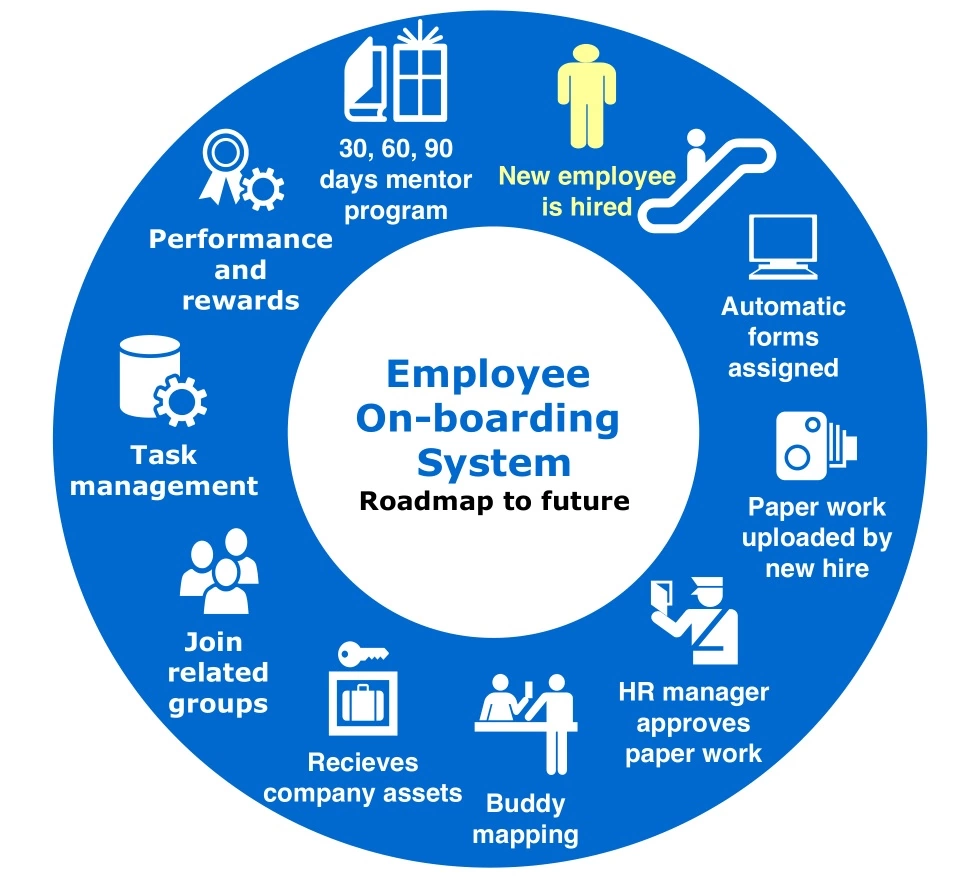OR Technology: Optimizing Decisions for a Better Future
OR technology, or Operations Research, is a powerful tool for making informed decisions across various industries. From optimizing supply chains to managing resources efficiently, OR techniques have revolutionized how we […]

OR technology, or Operations Research, is a powerful tool for making informed decisions across various industries. From optimizing supply chains to managing resources efficiently, OR techniques have revolutionized how we approach complex problems.
The history of OR technology dates back to World War II, when scientists and mathematicians were tasked with finding solutions to critical military challenges. Since then, OR has evolved significantly, incorporating advanced mathematical models, computer algorithms, and data analysis techniques.
The Rise of OR Technology

Operations Research (OR) technology has emerged as a powerful tool for optimizing complex decision-making processes across various industries. Its roots can be traced back to the early 20th century, evolving alongside advancements in mathematics, statistics, and computing. This journey has been marked by significant milestones and breakthroughs that have shaped its current applications and future potential.
Evolution of OR Technology
The evolution of OR technology can be understood through key milestones and breakthroughs that have shaped its development and applications:
- Early Origins (1900s-1930s): The foundations of OR were laid during the early 20th century, with pioneers like Frederick Winslow Taylor and Henry Gantt introducing scientific management principles to improve industrial efficiency. This period saw the development of techniques like time and motion studies, which aimed to optimize work processes and resource allocation.
- World War II (1939-1945): The Second World War served as a catalyst for the rapid development of OR. Military strategists and scientists collaborated to solve complex logistical problems, such as optimizing troop deployment, resource allocation, and anti-submarine warfare strategies. This period saw the emergence of key OR techniques, including linear programming and game theory.
- Post-War Expansion (1945-1960s): After the war, OR techniques found applications in various industries, including manufacturing, transportation, and finance. The development of computers further accelerated the adoption of OR, enabling the analysis of larger and more complex problems. This period saw the development of simulation modeling, queuing theory, and network optimization techniques.
- Modern Era (1970s-Present): The latter half of the 20th century witnessed a significant expansion in the scope and complexity of OR applications. Advancements in computing power, algorithm development, and data analytics have enabled OR to tackle increasingly complex problems in areas like healthcare, supply chain management, and financial modeling. This period saw the emergence of stochastic optimization, metaheuristics, and machine learning techniques.
Fundamental Principles and Concepts
OR technology is underpinned by a set of fundamental principles and concepts that guide its application in solving complex decision-making problems:
- Mathematical Modeling: OR uses mathematical models to represent real-world problems, capturing the essential relationships and constraints involved. These models provide a structured framework for analyzing and optimizing decision-making processes.
- Optimization Techniques: OR employs various optimization techniques to find the best possible solution within the constraints of the problem. These techniques include linear programming, integer programming, dynamic programming, and heuristic algorithms.
- Data Analysis: OR relies heavily on data analysis to inform the development and validation of models. Data collection, processing, and interpretation are crucial for understanding the problem context and evaluating the effectiveness of proposed solutions.
- Decision Support: OR provides decision support by generating insights and recommendations based on the analysis of data and model results. This helps decision-makers make informed choices and improve the overall performance of systems.
Real-World Applications
OR technology finds diverse applications across various industries, contributing to improved efficiency, cost savings, and better decision-making:
- Manufacturing: OR is used to optimize production planning, inventory management, scheduling, and resource allocation, leading to reduced production costs, improved efficiency, and faster delivery times. For example, OR techniques are used to optimize the layout of factory floors, minimizing transportation distances and improving overall productivity.
- Transportation: OR plays a crucial role in optimizing transportation networks, including routing, scheduling, and fleet management. This involves finding the most efficient routes for vehicles, minimizing travel time and costs, and optimizing the allocation of resources. For example, OR is used to optimize the scheduling of flights and trains, minimizing delays and maximizing passenger satisfaction.
- Finance: OR is widely used in financial institutions for portfolio optimization, risk management, and investment analysis. It helps financial analysts make informed decisions by optimizing asset allocation, minimizing risk exposure, and maximizing returns. For example, OR techniques are used to develop trading algorithms that automatically execute trades based on predefined criteria.
- Healthcare: OR is increasingly applied in healthcare to optimize patient flow, resource allocation, and treatment planning. It helps hospitals and clinics improve efficiency, reduce wait times, and enhance patient care. For example, OR is used to optimize the scheduling of surgeries and appointments, ensuring that resources are allocated effectively and patients receive timely care.
- Supply Chain Management: OR plays a crucial role in optimizing supply chain operations, including inventory management, transportation, and distribution. It helps businesses improve efficiency, reduce costs, and ensure timely delivery of products to customers. For example, OR is used to optimize the location of warehouses and distribution centers, minimizing transportation costs and ensuring efficient delivery.
OR Techniques and Methods
Operational research (OR) employs a diverse range of techniques and methods to solve complex problems in various domains. These techniques involve a systematic approach to analyze and optimize decision-making processes, ultimately leading to improved outcomes.
Common OR Techniques
OR techniques are valuable tools for analyzing and solving complex problems in various fields. They provide a structured framework for decision-making, enabling organizations to optimize their operations and achieve desired goals.
- Linear Programming: This technique is used to optimize a linear objective function subject to linear constraints. It is widely applied in resource allocation, production planning, and transportation problems.
- Network Optimization: This technique deals with optimizing flows in networks, such as transportation networks, communication networks, and supply chains. It utilizes algorithms like shortest path, minimum spanning tree, and maximum flow to find optimal solutions.
- Simulation: Simulation models are used to mimic real-world systems and analyze their behavior under different scenarios. They are particularly useful when analytical solutions are complex or unavailable.
- Decision Analysis: This technique involves evaluating and comparing different decision options based on their potential outcomes and associated probabilities. It helps in making informed decisions under uncertainty.
Strengths and Weaknesses of OR Techniques, Or technology
Each OR technique has its own strengths and weaknesses, making it suitable for specific types of problems. Understanding these characteristics helps in choosing the appropriate technique for a given situation.
| Technique | Strengths | Weaknesses | Use Cases |
|---|---|---|---|
| Linear Programming | Provides optimal solutions for linear problems. Can handle large-scale problems. Well-established theory and software tools. |
Assumes linearity in the objective function and constraints. May not be suitable for problems with non-linear relationships. Can be computationally expensive for highly complex problems. |
Resource allocation, production planning, transportation, scheduling. |
| Network Optimization | Effective for problems involving flows in networks. Provides optimal solutions for shortest path, minimum spanning tree, and maximum flow problems. Widely applicable in transportation, communication, and supply chain management. |
May not be suitable for problems with complex network structures. Can be sensitive to changes in network parameters. Requires accurate data on network characteristics. |
Transportation planning, communication network design, supply chain optimization. |
| Simulation | Can handle complex and non-linear problems. Provides insights into system behavior under different scenarios. Useful for testing hypotheses and evaluating alternative strategies. |
May not provide optimal solutions. Can be computationally expensive and time-consuming. Requires accurate modeling of the system. |
Production planning, queuing systems, inventory management, risk assessment. |
| Decision Analysis | Provides a structured framework for decision-making under uncertainty. Helps in identifying and evaluating decision options. Incorporates subjective judgments and probabilities. |
Relies on subjective probabilities and assessments. May be difficult to quantify all relevant factors. Can be complex for problems with many decision options. |
Investment decisions, product development, strategic planning. |
Steps Involved in Applying OR Techniques
The application of an OR technique typically involves a series of steps to effectively address a real-world problem.

OR in Decision-Making: Or Technology

Operational Research (OR) techniques play a crucial role in supporting strategic decision-making in organizations. They provide a structured and quantitative approach to analyze complex problems, identify optimal solutions, and evaluate potential outcomes.
Applications of OR in Strategic Decision-Making
OR techniques are widely used to support strategic decision-making in various industries and sectors. Here are some practical examples:
- Resource Allocation: OR models can be used to optimize the allocation of resources, such as budget, personnel, and equipment, to achieve organizational goals. For instance, a manufacturing company might use linear programming to determine the optimal production plan that maximizes profit while considering resource constraints.
- Supply Chain Management: OR techniques can help optimize supply chain operations, including inventory management, transportation, and distribution. For example, a retail company might use simulation modeling to evaluate different inventory strategies and identify the optimal level of inventory to minimize costs and ensure product availability.
- Marketing and Sales: OR models can be used to analyze customer data, predict demand, and optimize pricing strategies. For instance, a telecommunications company might use statistical analysis to identify customer segments with the highest potential for churn and develop targeted retention campaigns.
- Investment Decisions: OR techniques can assist in evaluating investment opportunities, managing portfolio risk, and making optimal investment decisions. For example, a financial institution might use decision trees to analyze different investment options and choose the one with the highest expected return.
Role of OR in Risk Assessment and Mitigation
OR techniques can be used to identify, assess, and mitigate risks associated with strategic decisions.
- Risk Identification: OR methods like brainstorming and Delphi technique can be used to identify potential risks and their sources.
- Risk Assessment: OR techniques such as risk matrix and Monte Carlo simulation can be used to quantify the probability and impact of different risks.
- Risk Mitigation: OR models can be used to develop strategies to reduce the likelihood and impact of risks. For instance, a construction company might use simulation modeling to evaluate different safety measures and identify the most effective ones to minimize the risk of accidents.
Ethical Considerations in OR for Decision-Making
While OR techniques can be valuable tools for decision-making, it’s important to consider the ethical implications of their use.
- Data Privacy: OR models often rely on large datasets, raising concerns about data privacy and security. It’s crucial to ensure that data is collected and used ethically and responsibly.
- Bias and Fairness: OR models can perpetuate biases present in the data they are trained on. It’s essential to address potential biases and ensure that models are fair and equitable.
- Transparency and Explainability: OR models can be complex and difficult to interpret. It’s important to ensure that decisions based on OR models are transparent and explainable to stakeholders.
Wrap-Up
As we move forward, OR technology will continue to play a crucial role in shaping our future. Its ability to harness data, analyze complex systems, and generate insightful predictions will be essential for tackling global challenges like climate change, resource scarcity, and pandemic preparedness. By embracing the power of OR, we can make smarter decisions and build a more sustainable and prosperous world.
The world of “or technology” is constantly evolving, with new innovations emerging every day. One exciting area of development is smart furniture technology , which promises to revolutionize how we interact with our living spaces. From self-adjusting chairs to temperature-controlled tables, smart furniture has the potential to enhance our comfort, efficiency, and overall well-being.
As “or technology” continues to advance, we can expect even more incredible breakthroughs in the realm of smart furniture and beyond.








